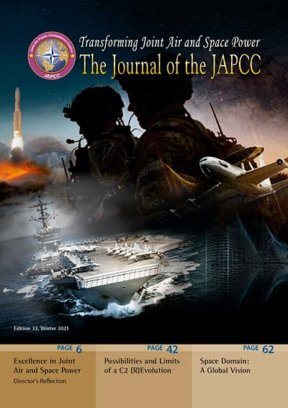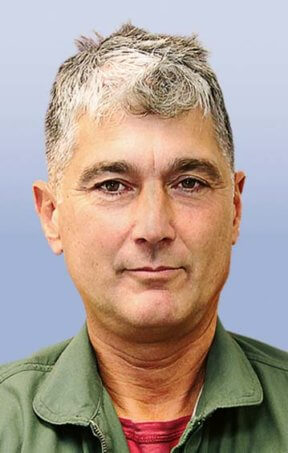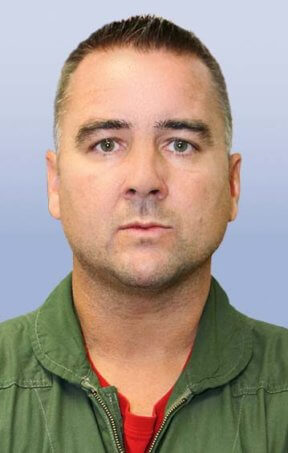Introduction
Change is associated in many cases with necessary actions, actions associated with positive effects, in politics, in aesthetics, in life. But this statement is not necessarily true if the changing subject already constitutes a relevant model of success. Altering the pillars and structures of a well-established working programme can inadvertently have unexpected negative impacts over some of its areas, and, for this reason, each change must be processed, analysed, and led through a sane and thoughtful decision-making process.
This is the exact issue with the Tactical Leadership Programme (TLP). TLP is overseen by a multinational headquarters based at Los Llanos Air Base, Albacete. It is composed of personnel from the 10 NATO member nations participating in the programme. Its main objective (Mission) is ‘to increase the effectiveness of allied tactical air forces through the development of leadership skills, mission planning, briefing, tactical flying and debriefing skills, and doctrinal/conceptual initiatives’.1
Throughout its 43-year history, TLP has become the focal point for NATO’s allied air forces tactical training, and the associated knowledge and leadership skills. Such skills are considered critical if NATO is to effectively face today’s tactical air challenges. This has, is, and will continue to be achieved with the effort, dedication, and professionalism of yesterday’s, today’s, and tomorrow’s TLP staff, a diverse and talented workforce.
TLP has navigated well through the different strategic, tactical, and technical stages of the last decades. The pattern of change has been based not only on the technological advances of modern systems, but also upon additional dynamic necessities such as the consolidation and growth of its members’ mutual trust and willingness to operate together.
Operation Allied Force, International Security Assistance Force (ISAF) mission, Operation Unified Protector, and multiple air operations framed in diverse campaigns are a testament to how TLP graduates bring undisputable value to the Alliance or any international coalition when it comes to integrating Tactics, Techniques, and Procedures (TTPs), criteria, and effort. This is the product of a shared methodology, syllabus, and camaraderie that enables the plug & play effect that precisely represents one of the major defining characteristics of NATO air forces. Combined with technological superiority, all these facets are crucial in maintaining Alliance’s strategic edge.
Absent from the implementation of an effective strategy, an accelerated change pattern may induce erratic decisions. A strategy is a plan comprised of interrelated actions to achieve a long-term goal. TLP has designed and is currently applying its own strategy to ensure that change increases the success of its leadership programme, which is fast approaching its 50th anniversary.
The TLP Strategy
The latest TLP strategy is based on its declared mission and was proposed and approved during the 2020 Steering Group (SG). The final objective of the strategy is twofold: to remain relevant with respect to the needs of its members whilst also aligning with the latest challenges and changes facing TLP. Such challenges, which adjust the operational tempo with which TLP wishes to train, include technology, infrastructure, doctrine, participants, and, fundamentally, scenarios and opponents.
Likewise, the TLP strategy is based on several premises:
- The airspace enjoyed by the TLP, already established in the Aeronautical Information Publication Spain, is ideal for the activities planned to be carried out regarding size, weather, and allotted land and maritime portions.
- The integration of Future Combat Aircraft System projects to include connectivity.
- Systems procured by NATO nations will be at various stages of development.
- Budgetary constraints will continue.
- The core air power roles as defined in NATO’s Allied Joint Publication 3.3 (B)2 for Air and Space series will remain as a solid reference.
- Information and data sharing limitations, national security requirements, caveats, constraints, and boundaries will be present and will demand management in TLP-like forums.
Recognizing these preconditions, five Lines of Operation (LoO) have been developed. This will allow this strategy to be realized at an operational level, which is, to act on each area in a particular way, but also to coordinate inclusively as part of the whole strategy. These LoOs and their associated milestones correspond to the inferences of a deductive planning process, in other words, the things we can sequentially do to achieve our goals. All LoOs are interconnected, all converging towards the execution of TLP’s mission and the realization of TLP’s vision, which clearly states that TLP will remain aligned and relevant.
LoO 1: Integrating 4th and 5th Generation Aircraft Operations
Doctrinal initiatives at the NATO level, related to the integration of 4th and 5th generation platforms gravitate between several options. Some are provided through information integration solutions, which in turn have been merged by the on-board sensors. Others are based on the reorganization of conventional Command and Control (C2) structures, which in some tactical contexts may consider 5th generation aircraft as a C2 sub-node. The distribution and orchestration of platforms from dissimilar generations, manned or not, is one of the challenges faced by the TLP, which represents at the tactical level the perfect Live, Virtual, Constructive and Live-Virtual laboratory for the Alliance to consolidate this integration process in a multinational context.
The current decade represents a period of transition in which the initial coexistence of 4th and 5th generation platforms will continue to expand. At the national level, some nations will continue to design interim processes in which 5th generation assets will replace the 4th generation ones. TLP will enhance the level of instruction provided to their mission leaders, helping to bridge the gaps between the training requirements of these two generations and contributing to the avoidance of potential fractures within these two training communities. Furthermore, through its various syllabi, particularly through opportunities that will open up in terms of virtual and live-virtual training, TLP will represent an unbeatable and optimal opportunity to aid nations in their transition to the newest generation of aircraft.
Soon after the inspection and evaluation carried out by the United States Air Force (USAF) in 2019, Albacete Air Base was certified for the operation of 5th generation aircraft. At present, the milestones (decisive conditions) included in this LoO refer mainly to infrastructure, such as the provision of a Deployable Debriefing Facility (DDF) farm with the required physical security elements. The DDFs will be distributed throughout TLP’s infrastructure to enhance the regular and safe operation of 4th and 5th generation multi-aircraft detachments.
Likewise, work is being done on installing an approach radar in the Albacete Air Base to speed up the recovery phase of missions involving large numbers of aircraft, thus enhancing flight safety. This Airport Surveillance Radar service entry is expected to happen in 2022.
LoO 2: Agile Combat Employment (ACE)
The USAF defines ACE3 as a ‘proactive and reactive operational scheme of manoeuvre executed within threat timelines to increase survivability while generating combat power’. TLP scenarios will incorporate those ACE characteristics that the fighting air assets can employ to protect personnel, equipment, and facilities before, during, and after an attack. Thus, they will continue generating combat power from locations other than their Main Operating Bases.
Concepts related to ACE have been addressed and practiced in other formats and forums. Since the 1990s, the Ample Train series of exercises established efforts to increase logistical flexibility at the tactical level by allied nations. It is noteworthy that the European Air Group (EAG) cooperates with TLP through basing their Eurofighter Typhoon Interoperability Program at Albacete under the framework of TLP flying courses.
Including ACE as a LoO fosters an agile combat culture among the participants. A first step is to include the ACE concept in the supporting academic courses, followed, as a second step, by the introduction of ACE-related injects and maintenance cross-servicing practices within the flight courses.
LoO 3: Virtual and Live-Virtual Training
This LoO is the most transformational and addresses all the changes that will be introduced with the use of a new tool: the TLP flight simulator.
This simulator consists of more than 30 fighter cockpits and Ground Control Interception positions so that virtual pilots and controllers can all carry out training whilst seated in the same room. It also includes modes related to the 5th generation aircraft and a huge array of options for modelling platforms, threats, and weapons.
The TLP Simulator, being a laboratory for complex tactical air missions, will allow the processing and defining of a multitude of new possibilities directly relating to and replicating the integration of all types of systems that are actually playing in Virtual and mixed Live-Virtual environments.
Tactical synergies detected in the real world can be later modelled in the virtual world and reciprocally, be it the cooperative interaction between different platforms, weapons, sensors, and air power roles, as well as among other capabilities that are currently introduced such as Miniature Air-Launched Decoys, electro-magnetic pulse weaponry, Tomahawk Land Attack Missile type weapons, as well as others.
Virtual maritime and land power platforms may be introduced to enrich the tactical context of the Blue (friendly) Forces. Likewise, both the TLP and the participating nations will be able to use the simulator to model and execute wargaming of specific missions or scenarios.
This new simulator incorporates connectivity with C2 systems to provide certain degrees of Live-Virtual training. It will be the alternate tool to be used in case of bad weather or other limiting factors. Also, it is already possible to fly virtual Blue and Red (enemy) tracks, inserted into live-flying scenarios from the simulator’s cockpits through the Link-16 network. The first Live-Virtual event (real Blue fighters plus virtual Blue fighters versus virtually-generated tracks, both airborne and ground-based) took place in June 2021. TLP, in coordination with the Host Nation (HN) (operator of the C2 system and responsible for airspace management), will determine the levels of ambition that allow both the safe operation of the systems and optimal training.
Once simulator’s capabilities are properly analysed, TLP’s syllabi will be reviewed in order to propose new options to its SG. These options will mostly be a product of combining or mixing Live and Virtual training.
LoO 4: Contested Degraded Operations
The TLP deploys live ground and air threats during its flying courses. Many other regional stakeholders, like the European Defence Agency and EAG, are looking for mid-term solutions regarding a Red Air provision.
Live Red Air is provided by the different participating countries in accordance with TLP’s Plan of Operations, while Live-Virtual Red Air can now be fed by virtual traces operated in real time either from the new TLP simulator or from future simulation facilities, which may become integrated into the HN’s C2 system.
Regarding Red Surface-Based Air Defence (SBAD), the TLP simulator’s intelligence generator is the perfect tool to introduce complex orders of battle, including proper opposing forces with SBAD settings based on patterns of movement and Emissions Control procedures. Simulation of enemy SBAD at an appropriate information classification level (TLP has just incorporated a NATO Secret Wide Area Network, thus the simulator supports classified information) will permit the reconstruction in the virtual environment of specific tactics observed in various scenarios, particularly those typical of Anti Access-Area Denial scenarios. The incorporation of a wideband joint threat emitter, planned for the year 2022, will radically improve the quality of such tactical contexts.
TLP and the HN have supported various site surveys from the participating nations to identify possible unpaved landing strips that can be used in missions that require them (like Slow Mover or Personnel Recovery). These types of operations enrich the scenarios that already include emitters, inflatable decoys, and other supporting live Ground-Based Air Defence elements (NASAMS, PATRIOT, CROTALE, MISTRAL).
LoO 5: Joint All-Domain
Air combat platforms will network together and be orchestrated with other land and maritime platforms while executing complex missions. The cyber domain will provide transversal connectivity features between domains and/or components, resulting in complementary C2 architectures parallel to those of each component command.
TLP’s cooperation with JAPCC is aimed at introducing relevant Cyber & Space aspects affecting the planning and execution of 4th & 5th generation Composite Air Operations (COMAO), as well as upgrading the joint portion of TLP’s tactical scenarios by embedding JAPCC’s lessons learned from its participation in the Trident Juncture computer-assisted exercise series.
It should be noted that this level of complexity may not have proper replication during the standard execution of the Flying or COMAO Courses, as the TLP Mission states that the main goal is to increase the effectiveness of the Allied Air Forces. Consequently, a Joint All-Domain Operations (JADO) overload may obscure this clear air mission. Furthermore, manning constraints are a limiting factor, as TLP instructors focus on the aforementioned air-centric tactical mission. Therefore, extra manpower would definitely be a significant asset to enhance this JADO step. However, once the TLP simulator is ready to take a step beyond regarding joint scenarios, it could offer TLP participants an air-centric introduction into the joint battlespace, which students may encounter in the future, while operating within the Air Component Command and in synchronization with other joint assets.
TLP in the Future
The TLP vision demands that it remain aligned and relevant. Throughout its history, TLP has successfully adapted to meet strategic, tactical, and technical transformations to effectively train NATO’s allied air forces to meet pertinent and exacting challenges. To continue to successfully navigate this path, and based upon the declared mission of TLP, these five intricately linked LoOs will ensure that TLP continues to achieve its long-term aim.














